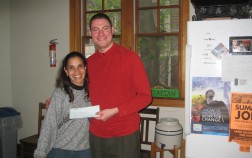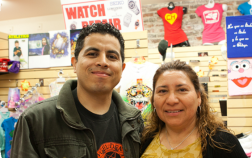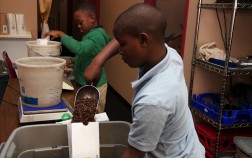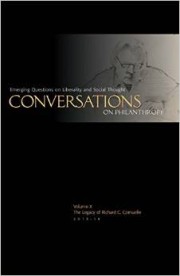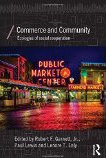Trends in Social Innovation: Household Economics
"To bring a healing impulse into the movement of money we need to consider whether human beings develop and are able to transform themselves into people with better qualities and attributes. Progress without our participation seems futile. We are too conscious and too willful to be bystanders in our own development."
— Rudolf Steiner
Economist Kenneth Boulding once described household economics as “the Achilles’ Heel” of our economy. “[D]espite the fact that we sometimes regard the household as almost extinct,” wrote Boulding, “if the other institutions in society had to perform the functions of households, society would immediately collapse. . . . One could make a strong case that the failure in the functioning of the household represents the major problem of the human race.”
Healthy household economies contribute to a flourishing society.
Despite the expansion of government spending in recent decades, households continue to be the most important agents in our national economy. But what does a healthy household economy look like? Household earnings, savings, consumer spending, debt, and internal household transfers (resources spent caring for non-earning household members) are each important indicators of economic health, but millions of American families lack knowledge and tools that can help them successfully manage their household economies.
According to the FDIC, more than 25 percent (approx. 30 million) of U.S. households are either unbanked or underbanked.[1] Thirty-nine percent carry credit-card debt over every month. And almost 1.5 million Americans file for bankruptcy every year.
Those in such precarious postures, especially those who do not have banking accounts, often resort to extreme measures when confronted with financial emergencies like an overdue utility bill or an expensive car repair. Every year, 12 million Americans apply for high-interest loans from payday lenders[2]—or check cashers—who make what are intended to be very short-term loans to individuals who often have no or poor credit and have been turned away by banks or credit card companies.
Having become a nation of spenders rather than savers, however, even millions of American families who do have access to modern banking and financial services find themselves in a tailspin of debt, whether for consumer credit card spending, pricey mortgages, college tuition, or health care bills.
Trends in Social Innovation seeks to discover and report on the ways that ordinary Americans are identifying and solving problems that plague their families and communities. There are positive signs that Americans are eager to reclaim their habits of thrift and put their households on firmer financial foundations. Over 4.5 million listeners now tune in weekly to Dave Ramsey’s popular radio show touting “financial peace” and offering strategies for getting out of debt. Families and friends are talking about “zero-based budgeting” and holding each other accountable. Online swapmeets, such as The Freecycle Network and Craig’s List are promoting re-use and re-cycling of household items. In urban areas, services such as Zipcar and B-cycle are making it possible to pay for transportation, on a need only basis.
In the philanthropic arena, an array of independent ventures have emerged around the country with the aim of helping those on the financial sidelines not only gain their financial footing, but grow their capacity to save, invest, and build toward the future. Rather than leaving these families as dependent clients of the welfare state, charitable groups have focused on helping people develop the financial skills and competencies they need to strengthen their households and extend their participation in the broader economic order.[3] By creating, testing, and refining new models for saving, lending, and borrowing, such organizations are helping Americans become financially literate, establish good credit, purchase homes, and even become successful business owners.
This month, Trends in Social Innovation explores three such approaches to strengthening household economics: microfinance (also known as microlending), peer lending circles, and financial literacy education.
In “Microfinance in America” we illustrate how very small loans can multiply exponentially in the hands of those who have received financial literacy education and entrepreneurship training. In “Peer Power” we show how low-income individuals in the San Francisco Bay Area are helping each other build credit by revisiting the practice of lending circles, a tradition long practiced in Asia, Africa, and South America. Lastly, “Grade School Marketplace” explores how hands-on economic education can help children avoid a lifestyle of helplessness and instead grow into servant-minded contributors to society.
We hope you will read with interest and send us your own stories that show how people are working together to reclaim the American Dream.
- 2009 FDIC National Survey of Unbanked and Underbanked Households.
- Although often demonized, check cashers and payday lenders fill a market need by providing loans to customers who can’t get them anywhere else. Some might say that high-interest loans offset the high risk of lending to clients with no or poor credit.
- Coined by the Austrian economist Friedrich Hayek, “the extended order of human cooperation” is a phrase that describes the ways that society organizes itself spontaneously and separately from government directives.


